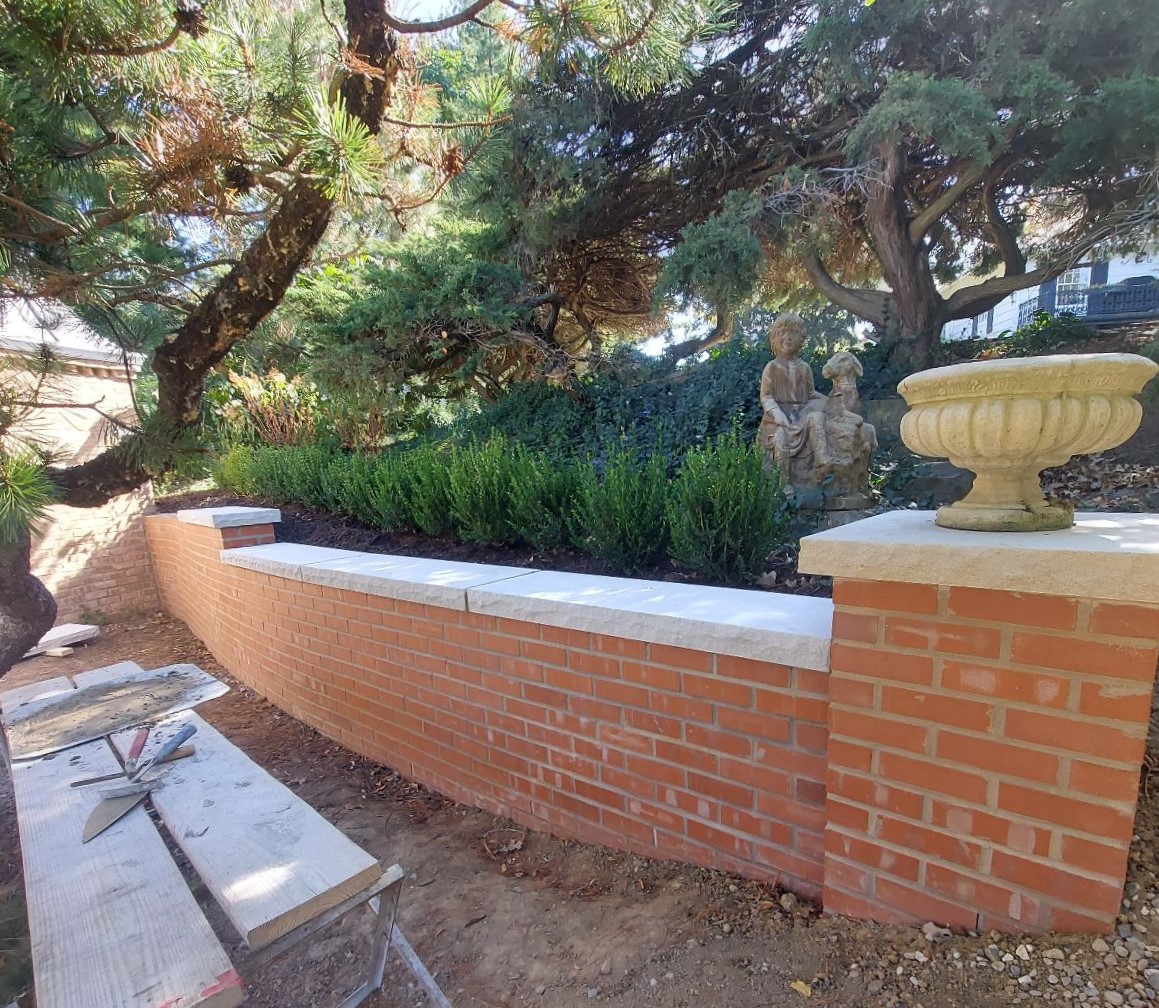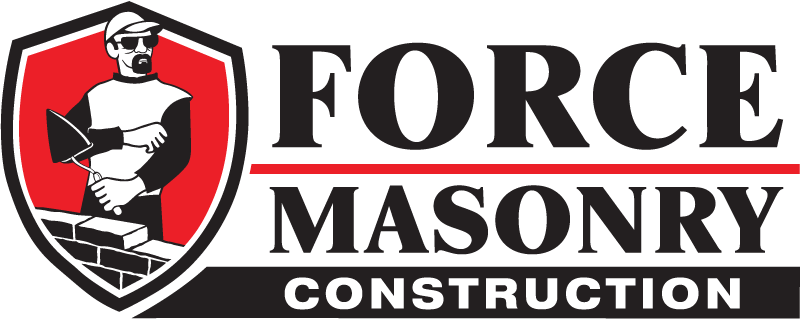Get a Free Estimate!
Understanding Retaining Walls
Retaining walls hold back soil and prevent erosion, often enhancing the look of your property. However, drainage is key; poor drainage can cause hydrostatic pressure, leading to wall failure. Typically you see retaining walls where there is elevation change in the grade of the property.
Why Retaining Walls Fail
- Poor Drainage: Without proper drainage, water buildup can crack or collapse the wall.
- Incorrect Materials: Substandard materials or insufficient reinforcement compromise the wall’s strength.
- Improper Footing: A shallow foundation/footing can cause shifting or tipping due to frost heaving it.
- Overloading: Excess pressure from soil, structures, or vehicles can exceed the wall’s capacity.
- Tree Roots: Roots can grow into the wall, causing cracks and instability.

Reconstructing a Retaining Wall
- Damage Assessment: Identify issues like leaning or cracking; professional help may be needed.
- Planning: Address previous failures, considering soil, drainage, and load requirements.
- Material Selection: Choose the right materials, such as concrete blocks, stone, brick, or timber.
- Drainage: Include solutions like gravel backfill or drainage pipes to prevent future issues. (1” to 2” rock is preferred)
- Reinforcement: Reinforce taller walls with rebar or geogrid to ensure stability.
Types of Retaining Walls
- Timber Walls: Durable and replaceable, especially when using treated lumber and I-beams. The reason replaceability is important on these walls is because the wood will eventually rot over the course of many years if not maintained properly. The I Beam solution makes the lumber easy to replace for the next person that may need to replace it.
- Masonry Walls: Concrete blocks with reinforcement bars and proper footings offer stability and aesthetic appeal.
- Manufacturer-Specific Blocks: These come with warranties but require careful installation to meet specs.
Choosing an Experienced Professional
- Check Qualifications: Ensure the contractor is experienced and insured.
- Evaluate Knowledge: The contractor should explain project challenges, solutions, and understand local codes.
- Transparency: Look for clear communication about costs, timeline, and materials.
- Root Cause Analysis: Ensure the contractor can explain why the old wall failed and how they’ll prevent future issues.
- Check Google Reviews: Look for feedback from previous clients to gauge the contractor’s reliability and quality of work.
Risks of Hiring an Unqualified Contractor
- Structural Failures: An unqualified contractor may compromise the wall’s integrity, leading to potential collapse.
- Legal and Liability Issues: Poor workmanship can result in costly legal disputes and liability concerns.
- Expensive Repairs: Cutting corners with an unqualified contractor often leads to costly re-dos and repairs later on.
October 28, 2024
Categories:Uncategorized
0 Likes


